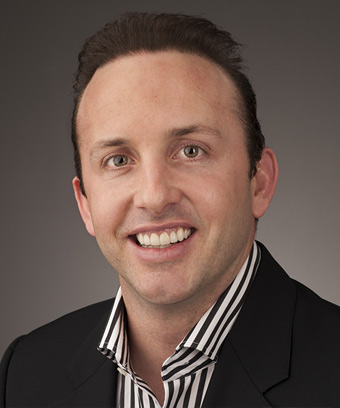How do you build a portfolio you can retire on?
 The ultimate goal for most property investors is to create a portfolio that will eventually provide them with enough cash to live off.
The ultimate goal for most property investors is to create a portfolio that will eventually provide them with enough cash to live off.

Blogger: Ryan Crawford, founder & group director, Crawford Realty
Indeed, residential property is becoming increasingly appealing as an asset class among SMSFs and among those who are waking up to the grim reality that their superannuation and pension are going to fall drastically short when they come to retirement age. For others among us, we simply want to live a life of financial freedom as quickly as possible!
I’m often asked by investors: “How many investment properties do I need to retire?” That’s a question that can’t be easily answered. Rather than a question of properties, it’s a question of “how much positive cash flow should I be generating?” Or, “how much equity do I need?”
For example, you may have several properties in your portfolio but if they haven’t increased much in value and/or they aren’t putting profit in your pocket each week, then you’re no closer to retiring than you were when you started investing! In fact, you’re further away than ever as your portfolio is costing you money, rather than making you money.
Another investor, may have just two properties in their portfolio. However, they made some smart property selections and seen their portfolio and rental income significantly increase in value in a just a few years.
So, how much do you need to comfortably retire for, say, 20 years? My current basic method of calculation when working out how much we need is based on $100,000 per couple per year for 20 years. Which means we need $2 million to comfortably retire on a 20 year timeframe.
The second question I’m asked is “how do I achieve this through property investment?”. There are several strategies - each with their advantages and disadvantages. The one that will work best for you comes down, as always, to your personal risk comfort level. Here's a brief overview:
Strategy 1: Positive cash flow
This strategy focuses on building a portfolio of cash flow positive properties until you are generating $100K per year in profit.
Pros: The 20 year timeframe doesn’t apply here, assuming cash flow is maintained. You have the option to continue to build your wealth using your income and equity, and you will have some excellent assets to pass onto your family. Importantly, this strategy won’t leave you out of pocket while you’re building your portfolio!
Cons: Maintaining your portfolio (as opposed to selling it off) means you will remain at risk of market fluctuations during your retirement phase. Unless you pay down at least some of your debt, you will also maintain high levels of debt. You also need to be willing to continue managing, at least to some degree, your portfolio of rental properties.
How to do it? Creating this level of positive cash flow is challenging but certainly not impossible. It is founded on solid research which will identify areas where there are positive cash flow properties and some capital growth. Locations are likely to be regional areas undergoing significant economic development, which do generally carry greater risk. Once invested, with your cash flow and sufficient market growth, you should be able to purchase again within 24 months. Repeat this formula until your annual cash profit from your rental income has reached $100,000. Make sure you have a sound risk management plan in place and you are regularly (every six months) reviewing your portfolio and the markets you’re active in so that you are well positioned to react quickly to any negative situations.
Strategy 2: Growth - and then liquidating
This is probably the lowest risk strategy. It focuses on capital growth alone - building a portfolio of growth properties until you’ve created at least $2 million equity. At which point, you sell them and live off the cash profit.
Pros: Low risk. You’re not at the mercy of the markets as you have liquidated your assets and transferred the cash profit to a savings account and/or other low risk investments.
Cons: Your cash won’t last forever. A strict timeframe will apply and you will need to budget carefully. You also won’t have any property assets to pass to family members.
How to do it? The main issue with this strategy is that you are negatively geared. You will be relying fully on capital growth for financial gain. Smart property selection is crucial so thorough research is required to ensure you’re buying property that is going to deliver sufficient capital growth. As with strategy 1, if you can locate areas that deliver in excess of 10% growth a year, then you should be in a position to add to your portfolio every 12 to 18 months. The number of properties you need to invest in before you find yourself with $2 million in net assets will vary greatly between investors and will depend entirely on market growth and whether you have been paying down any of the principal.
Strategy 3: Growth - and then paying down debt
This strategy is combination of 1 and 2. You build a portfolio of both cash flow and growth properties. Once you’ve created sufficient equity, you then use some of that equity to pay down debt, essentially turning your negatively geared properties into positively geared properties and creating/increasing your passive income.
Pros: This strategy allows you to create a passive income to live off while maintaining your growth assets.
Cons: You will still be at risk of market volatility and will need to manage, at least to some extent, your remaining rental properties. You will also still have some debt.
How to do it? Focus on acquiring two or three high yielding properties first to provide cash flow security. Then, diversify into a couple of capital city properties to offer long term growth security. With this combined capital growth and positive income, look to reduce LVR across your portfolio to around 50% over a five to 10 year period. This will increase your cash flow, provide higher security and reduce risk during the retirement income phase.
Regardless of the strategy you choose, remember to seek the appropriate advice from your property investment strategist, financial advisor and accountant to ensure you’re making the right decision for your financial situation and goals.
About Ryan Crawford Ryan Crawford has been involved in the property investment industry for over 10 years, making the transition from successful investor to real estate professional.
Ryan Crawford has been involved in the property investment industry for over 10 years, making the transition from successful investor to real estate professional.
Ryan is a firm believer in the power of positive property as a wealth creation vehicle. In just eight years he had built a multi-million dollar portfolio and created a significant second income.
A decade later, having refined his strategy for wealth creation, Ryan is now dedicated to sharing his wisdom and insight to help every day Australians achieve their financial goals.
“Financial freedom is within everyone’s reach. We have enabled many investors, previously unaware of the power of positive property, to build multimillion dollar positive property portfolios. Their investments now generate enough income to support early retirement, allowing them to live the lifestyles they had always dreamed of.”
For more information view - https://www.crawfordrealty.com.au
